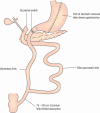Modern management of obesity
- PMID: 20095314
- PMCID: PMC4952310
- DOI: 10.7861/clinmedicine.9-6-617
Modern management of obesity
Figures



References
-
- World Health Organization. Obesity and overweight. Factsheet no 311. Geneva: WHO, 2006.
-
- The Information Centre. The health survey for England, 2006. London: Department of Health, 2006.
-
- Foresight. Tackling obesities: future choices – project report. London: Stationery Office, 2007. - PubMed
-
- Dansinger ML, Gleason JA, Griffith JL, Selker HP, Schaefer EJ. Comparison of the Atkins, Ornish, Weight Watchers, and Zone diets for weight loss and heart disease risk reduction: a randomized trial. JAMA 2005;293:43–53. - PubMed
Publication types
MeSH terms
Substances
LinkOut - more resources
Full Text Sources
Medical

